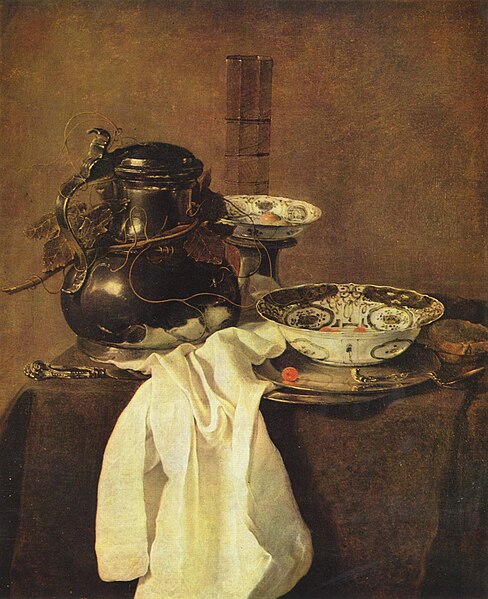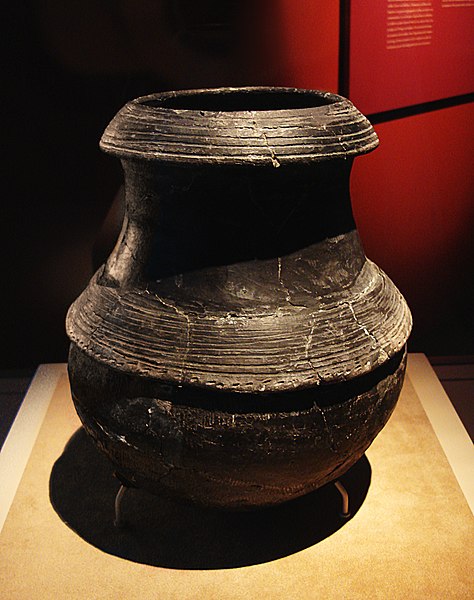Chinese export porcelain includes a wide range of Chinese porcelain that was made (almost) exclusively for export to Europe and later to North America between the 16th and the 20th century. Whether wares made for non-Western markets are covered by the term depends on context. Chinese ceramics made mainly for export go back to the Tang dynasty if not earlier, though initially they may not be regarded as porcelain.
An armorial dinner service for the American market, c. 1785–1790
Chinese blue and white export porcelain, with European scene and French inscription "The Empire of virtue is established to the end of the Universe", Kangxi period, 1690–1700.
Chinese porcelain plate for a Dutch sea-captain of the ship Vryburg, Canton, 1756.
Dutch 17th-century still-life painting by Jan Jansz. Treck, showing late Ming blue and white porcelain export bowls, 1649.
Chinese ceramics show a continuous development since pre-dynastic times and are one of the most significant forms of Chinese art and ceramics globally. The first pottery was made during the Palaeolithic era. Chinese ceramics range from construction materials such as bricks and tiles, to hand-built pottery vessels fired in bonfires or kilns, to the sophisticated Chinese porcelain wares made for the imperial court and for export. Porcelain was a Chinese invention and is so identified with China that it is still called "china" in everyday English usage.
a pair of complementary flasks from Yongle period (1402–1424) in the Ming dynasty
Pair of famille rose vases with landscapes of the four seasons, 1760–1795
A black pottery cooking cauldron from the Hemudu culture (c. 5000 – c. 3000 BC)
Painted jar of the Majiayao culture, Late Neolithic period (3300–2200 BC)








